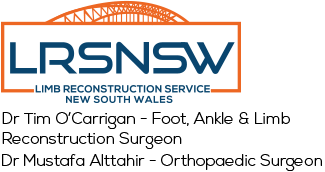Achilles Tendon Repair
-
Patient at Three Months Post Percutaneous Achilles Repair
-
Achilles Rupture
Achilles tendon ruptures are a common injury and typically occur in men between the ages of 30 and 50.
Most ruptures occur 2-6cm from the achilles insertion into the heel although occasionally they can avulse from the heel bone itself.
The usual injury is caused by forced eccentric loading of the plantarflexed foot meaning the calf is contracted but the foot is forced up against that contraction and the patients often think someone has kicked them in the back of the leg.
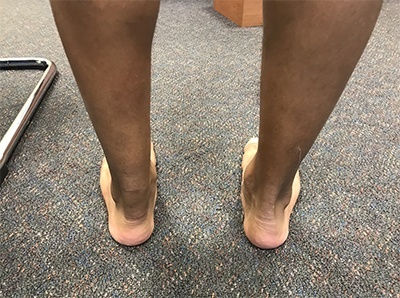
Three Months Post Percutaneous Achillesc Repair
The usual injury is caused by forced eccentric loading of the plantarflexed foot meaning the calf is contracted but the foot is forced up against that contraction and the patients often think someone has kicked them in the back of the leg.
The clinical signs are swelling and a limp. There is a palpable gap in the tendon and the foot doesnt move when the calf is squeezed (Thompson Test)
Achilles Tendon Ruptures can be treated Operatively or Non operatively. There is an ongoing debate in the orthopaedic community as to the best approach.
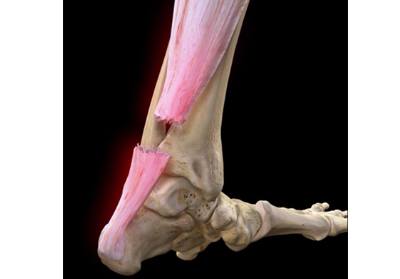
The advantage of a nonoperative approach is avoidance of any wound complications. The main disadvantage is that there is a higher rerupture rate and in my experience the achilles can heal but is “stretched out” and the calf is weaker as a result. Good results can be achieved with nonoperative management however early diagnosis and treatment is important.
Operative Repair has traditionally involved a long incision and direct repair of the tendon ends to restore length and tendon integrity. The main disadvantage of this approach is the risk of wound healing problems which can lead to deep infection. There is also a disruption of the soft tissue envelope around the tendon and this is important for tendon healing.
The compromise to these two approaches which is my preferred solution is Percutaneous Achilles Tendon Repair.
This is an operation that is done through a small transverse incision over the rupture site and a jig is inserted within the tendon sheath that allows percutaneous insertion of sutures through the proximal and then distal tendon- the sutures are delivered into the incision site
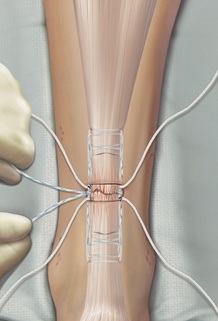
and the tendon reduced and the sutures tied off.
Sometimes a second parallel incision is required to get good suture purchase in the proximal tendon.
This restores the length and integrity to the tendon whilst minimising disturbance to the soft tissue envelope and almost eliminates the risk of wound healing problems.
The main risk is irritation to the sural nerve which is a cutaneous nerve that passes across the back of the calf. This is rare and if it does occur is usually transitory.
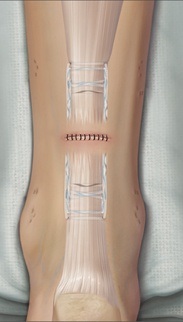
Postop the patient is placed in an articulating removable brace and it can be removed for early active range of motion. The brace is adjusted over several weeks to bring the ankle to neutral and the patient starts weight bearing as tolerated at 6 weeks and the brace is discontinued after 10 weeks.
Full recovery from an achilles rupture takes at least 6 months.
